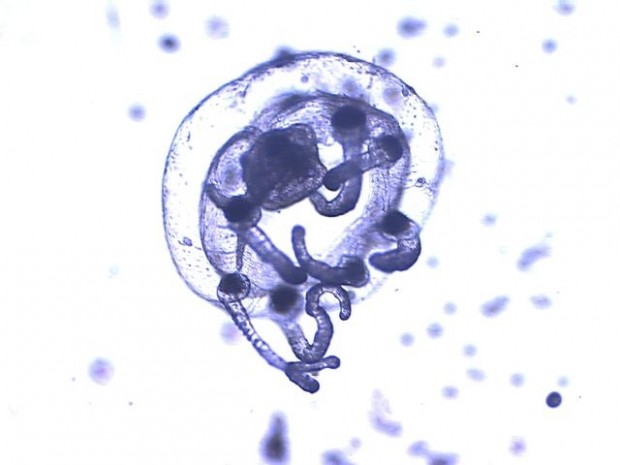Conservation Dept. Statement On ‘Sea Lice’
The Department of Conservation Services today [Aug.3] released a statement about the recent reports of ‘sea lice’, which said that in “an abundance of caution, swimmers are being advised to avoid swimming in the Great Sound and adjacent areas as this is the area where most people were affected during the Cup Match holiday.”
Yesterday Bernews carried a story about the ‘sea lice‘, with numerous locals reported being affected by it, many reporting symptoms emerging after the recent Non-Mariners Race in Mangrove Bay, Sandys. Locals have also reported having gotten ‘sea lice’ while swimming in other areas of Bermuda in recent weeks.
Dr Roslyn Bascombe Adams, Deputy Chief of Emergency at KEMH, said “We have had a number of cases of sea lice in Emergency at the hospital and the Lamb Foggo Urgent Care Centre, but not more than we usually see.”
The statement released today said, “While investigation into the exact cause of stinging and rash is underway, initial thoughts are that this is likely to be a result of the thimble jellyfish Linuche unguiculata.” The photo below shows suspected Linuche unguiculata taken from Bermuda waters yesterday. Photo credit: Rachel Parson.
“Out of an abundance of caution, swimmers are being advised to avoid swimming in the Great Sound and adjacent areas as this is the area where most people were affected during the Cup Match holiday,” said the statement.
“The South shore is less likely to have the same density of jellies due to the larger dilution effect. Jellies are also likely to thrive in inshore waters because there is more food for them. The duration of this event may stretch over 2-3 weeks.”
The statement goes on to give care advice, much the same advice we carried yesterday
The full statement is below:
The Department of Conservation Services, within the Ministry of Public Works, and the Department of Environmental protection within the Ministry of Environment, Planning and Infrastructure today commented on reports of swimmers being affected by sea bather’s eruption, sometimes referred to as ‘swimmer’s itch’ or ‘sea lice’, while swimming in the ocean.
During the Cup Match holiday swimmers from various parts of the Island reported emerging from the water with itchy skin and developed a red rash.
While investigation into the exact cause of stinging and rash is underway, initial thoughts are that this is likely to be a result of the thimble jellyfish Linuche unguiculata.
Local scientists took water samples yesterday but were unable to positively identify several small jellies that were less than 1mm in size as they were at an early developmental stage with insufficient diagnostic features. Adult Linuche are up to 2 cm in size.
However, scientific evidence from other jurisdictions indicates that all floating stages of this species can produce sea bather’s eruption.
Despite not positively identifying the species as Linuche, the assumption is that the small jellies found in the samples are responsible for the swimmers’ reactions. Further samples will be taken during the next few days in an effort to positively identify the species.
If the thimble jellyfish are responsible, most of the stings occur when the animals are trapped against the skin, often around the edges of swimwear, rather than just brushing against them while swimming. Stinging cells may also be triggered by fresh water so swimwear should be removed before showering.
Treatment may not be necessary and if left alone the rash should go away within a few days. Calamine lotion may reduce the irritation. If symptoms persist for longer than several days, or worsen, a Doctor should be consulted.
Jellies may still be present in swimwear after exiting the ocean and it is recommended that swimming attire be machine washed to avoid the possibility of further stinging when swimwear is used again.
Out of an abundance of caution, swimmers are being advised to avoid swimming in the Great Sound and adjacent areas as this is the area where most people were affected during the Cup Match holiday.
The South shore is less likely to have the same density of jellies due to the larger dilution effect. Jellies are also likely to thrive in inshore waters because there is more food for them. The duration of this event may stretch over 2-3 weeks.
Read More About
Category: All, Environment, News



That blue type presentation……Is that a MRI of the PLP?…..
Looks kinda jelly……
This is serious.
Stay out of the water folks. Were surrounded…….(water)……….
And always remember, …..’If you have lice,..bee nice’…soggy lice is inviting mice……
…not the worst thing in the water this weekend….
Is it possible for the lice to enter body piercings??